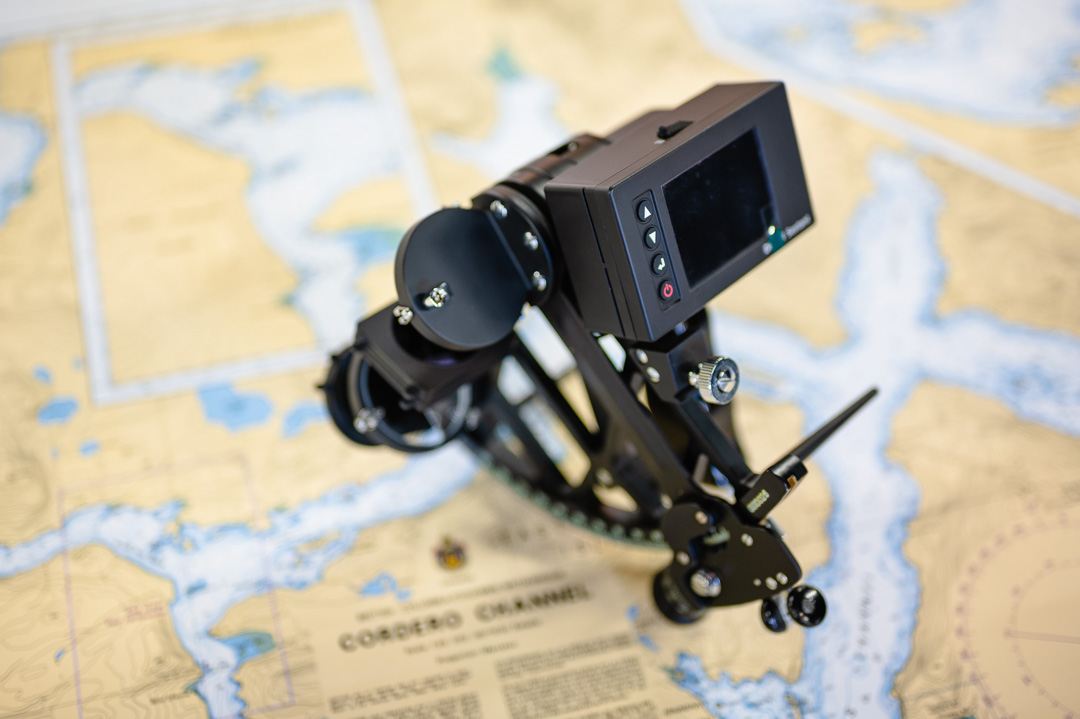Navigating Around GPS Hacking with the Digital Sextant

Navigating Around GPS Hacking
Military experts say the threat of satellite jamming and cyber-attacks on the global GNSS (Global Navigation Satellite System) continues to rapidly expand. State actors like Russia, China, and North Korea along with rogue non-state actors perpetrate millions of attacks across a wide variety of platforms each day including the GNSS. The Center for Advanced Defense Studies (C4ADS) used AIS path histories to identify nearly 10,000 attacks from February 2016 through November 2018 which impacted 1,311 commercial vessels. The GNSS system is unsecure and weak signals are susceptible to hacking, jamming, spoofing, and meaconing.
Vessels of all types rely on global positioning systems (GNSS) to navigate. Celestial navigation was a necessity on the open sea for over 500 years and understandably became an afterthought in the age of navigation computers and global positioning networks. Celestial navigation was dropped from the U.S. Naval Academies curriculum over 20 years ago but has since been brought back because of these attacks on the GNSS. Celestial navigation is complicated and can take 15-20 minutes to get a good position fix. So how do you protect your vessel’s navigation operations from attacks? There is now a hybrid solution, the Digital Sextant.

What is the Digital Sextant?
The Digital Sextant, model DS-10, is an FCC certified smart device which calculates your vessel’s global position based on a celestial sighting rather than vulnerable satellite information. To be able to find your position quickly and easily in an emergency without flipping through a Nautical Almanac and running long calculations is invaluable to the bridge of any open ocean vessel. Currently, the Digital Sextant and paper charts are the only un-hackable means of navigation.
According to Dr. Lee, the developer of the Digital Sextant and CEO of LEEYOUNG SND, the digital encoder can read angles as small as five seconds of arc, which is one-twelfth of an arc minute. In simpler terms this emergency device, based off the extremely popular Astra IIIB Sextant, has excellent accuracy even when used by a novice sight taker.
The Digital Sextant is independent of the GNSS cybersecurity weaknesses, and it also features optional EMP shielding. Naval units across Asia and Europe have already begun to adopt the Digital Sextant for use on their vessels. In fact, the South Korean navy recently announced that they are mandating the device on several of their vessels.

What to do During a Jamming or Spoofing Attack
Military experts are well aware of the increase in jamming attacks on GNSS and the cost of the growing number of maritime accidents associated with them. There are certain steps navigators can take to avoid disaster during a cyber-attack to your GNSS. International Association of Independent Tanker Owners (INTERTANKO), who is making a big push for cyber security on the open sea, recommends navigators detect spoofing and jamming as soon as possible by comparing information from radar and ECDIS. Once anomalies are detected, you can no longer rely on your GPS. Select a secondary position sensor and immediately begin manually plotting your vessels position using paper charts, a sextant, and the parallel indexing method when near a coastline. If unable to ascertain vessel’s position, then temporarily stopping the vessel is the safest option to avoid navigational hazards.
These are just general tips on what to do during a cyberattack at sea and it’s recommended to always follow your emergency operations manuals. The Digital Sextant can now be a reliable part of your back-up navigation procedures to ensure your vessel, crew, passengers, and cargo are safe.
James Henjum, Marketing Manager at Bluewater Books & Charts, previously worked in the security sector. He can be reached at [email protected]





